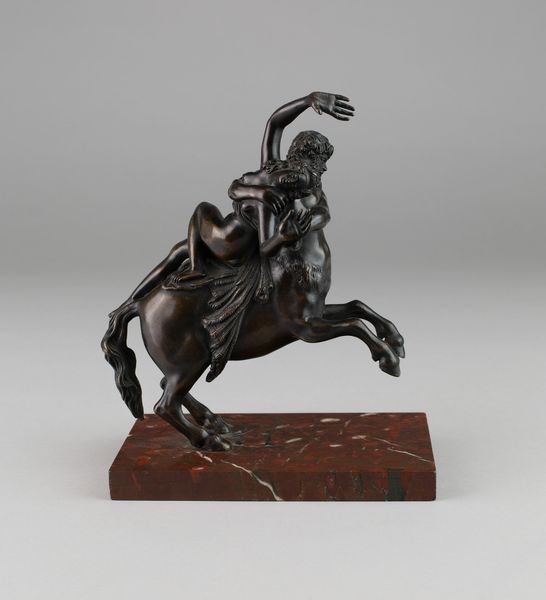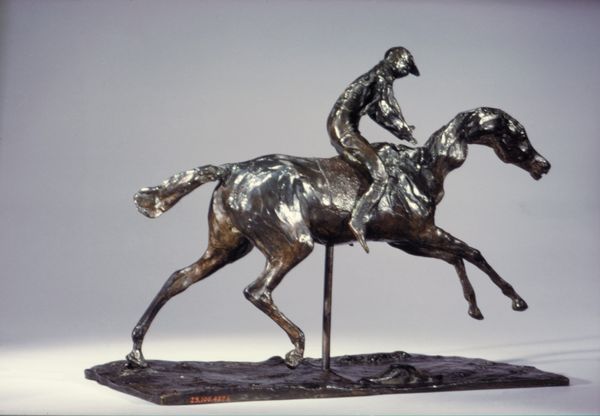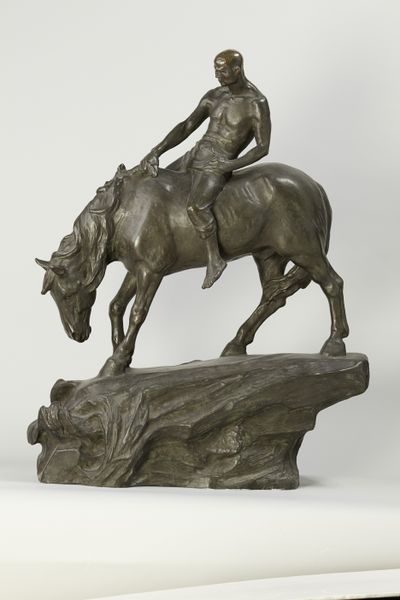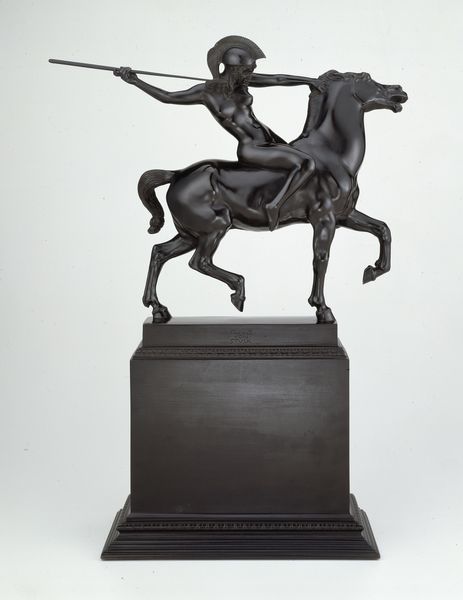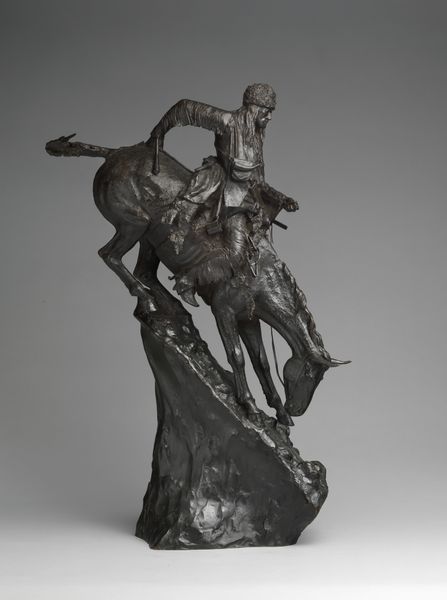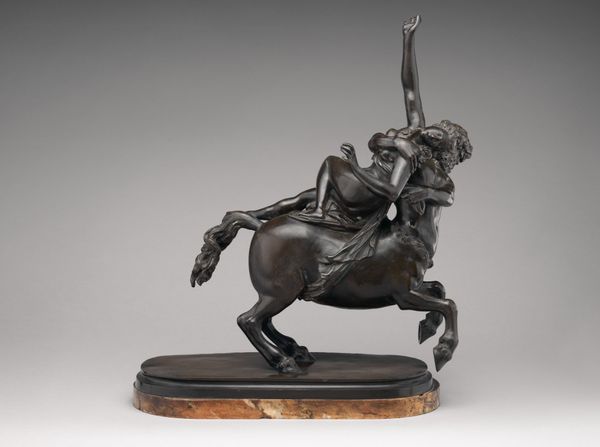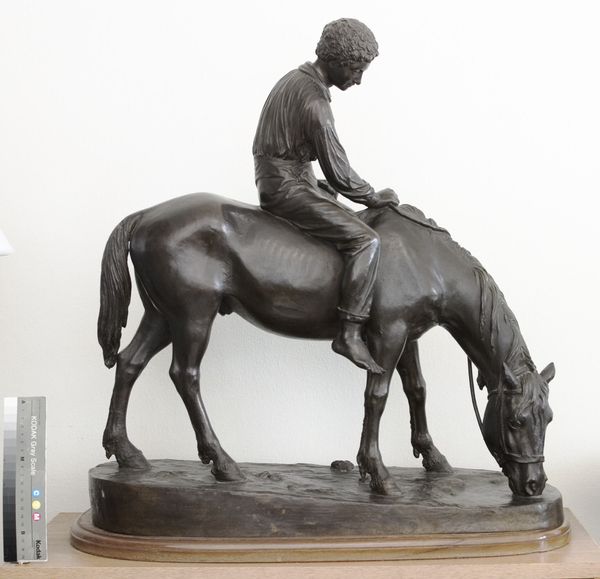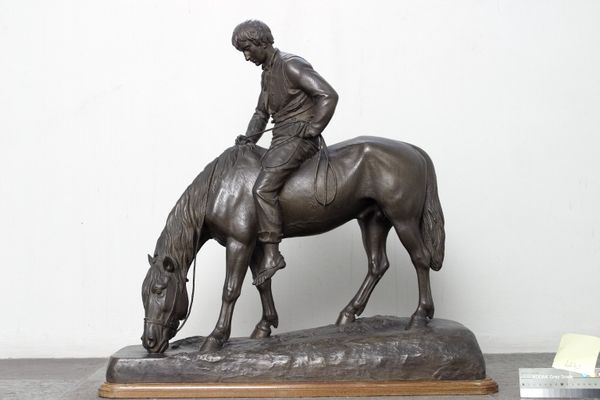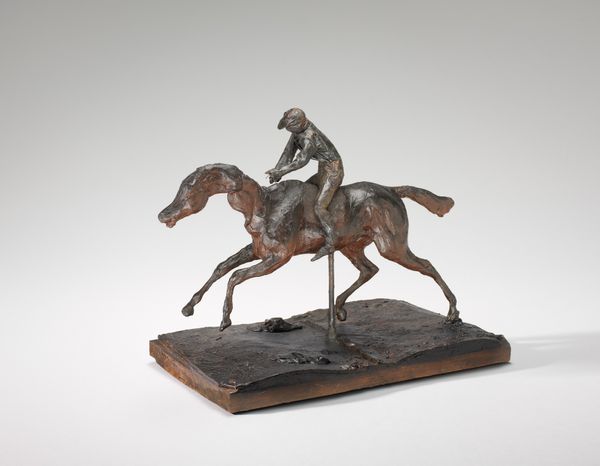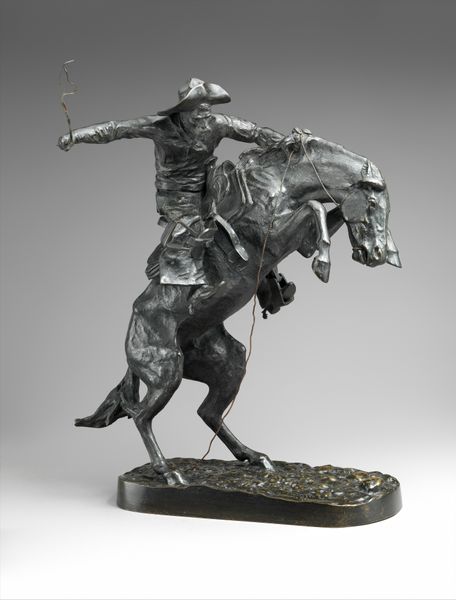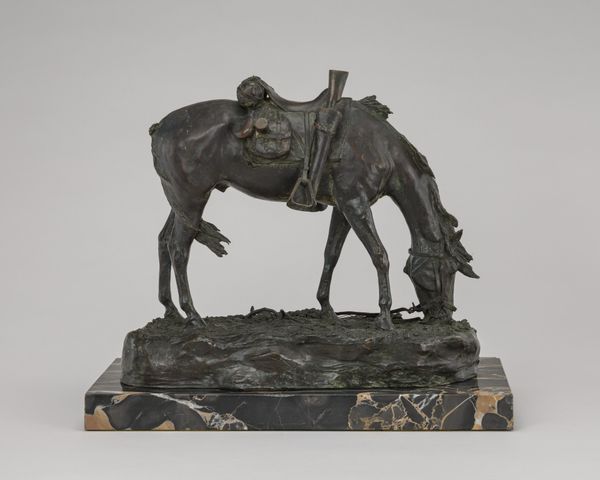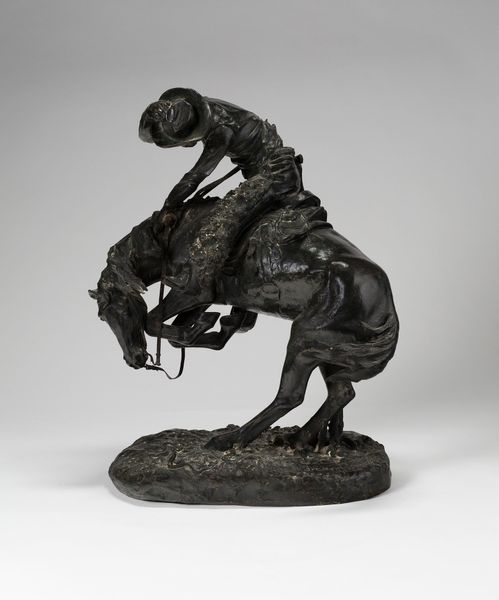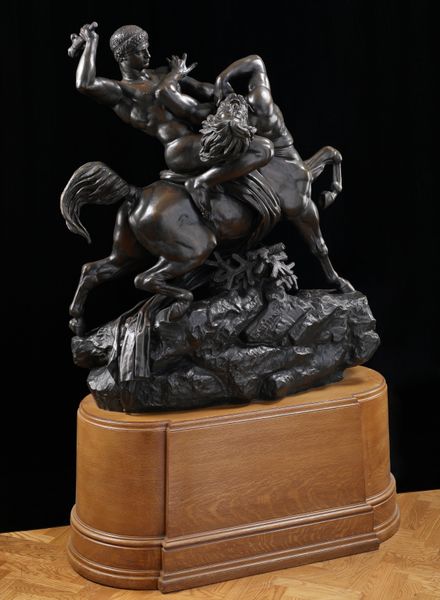
bronze, sculpture
#
narrative-art
#
sculpture
#
bronze
#
figuration
#
sculpture
#
united-states
#
realism
Dimensions: 30.5 × 47 cm (12 × 18 1/2 in.)
Copyright: Public Domain
Charles Schreyvogel created "The Last Drop," a bronze sculpture depicting a soldier offering water to his horse, sometime in the early 20th century. The sculpture tells a story of the American West, one steeped in the mythos of rugged individualism and frontier expansion. Consider the cultural context: the late 19th and early 20th centuries saw the rise of the "Wild West" as a popular theme in art and literature, even as the actual frontier was closing. Schreyvogel, along with artists like Remington and Russell, contributed to this romanticized vision, often glossing over the brutal realities of westward expansion and its impact on Native American populations. The soldier’s selfless act is a visual code for the bond between man and animal and a symbolic representation of frontier virtues like resilience and resourcefulness. Art historians can look to period literature, government documents, and popular culture to understand the social forces at play when considering Schreyvogel's vision. The meaning of "The Last Drop" remains contingent on our understanding of the social and institutional contexts that shaped its creation and reception.
Comments
No comments
Be the first to comment and join the conversation on the ultimate creative platform.
